Semantics is a concept that is coming up more and more often in the context of conversations about SEO. Many people have already heard of terms such as topical authority or information architecture, which make up the broader topic of semantic SEO. Of course, there is no SEO without keywords, and this raises the questions: what are semantic keywords, where to look for them and how to use them? Let’s unpack these issues one by one.
What are semantic keywords?
.
To understand what semantic keywords are, we should go back in history, specifically to 2013 (which is actually prehistory). That’s when one of the most important changes in the development of Google’s search engine took place: the Coliber (Hummingbird) update.
Prior to its introduction, Google essentially paid attention to how many times a key phrase was used in content, in order to understand what the content was about. That is, if the phrase “pink elephant” appears once, it’s probably a coincidence. If 20 times – then there is no force, the page like nothing treats about a pink elephant.
Quite coarse, but we had nothing better for that moment. What kind of work methods it prompted SEO specialists to do, and how the top-ranked sites were able to look – we all know.
The change that was initiated on a larger scale by Hummingbird, and which continues to this day, was the redirection of bots’ attention from the frequency of a key phrase (it still matters, but no longer as much) to the context in which the phrase appears. Additional importance was therefore given to words that are not our main phrase – but that have a closer or further connection to it.
Subsequent updates and additions to Google’s algorithm, such as Neural Matching, BERT and RankBrain, have improved the whole mechanism. Today, Google already has a really good understanding of natural language. It is able to recognize the context of the information and the user’s intentions very well.
Learn more about the history of search engine development and the principles of semantic SEO in Damian Salkowski’s webinar:
.
When it comes to a semantic search engine like Google has been since 2013 or so, it is context and intent that plays a key role.
Accordingly,when we talk about semantic keywords, we primarily think of words that are contextually related and jointly respond to a given search intent.
The keyword phrase we are interested in might be pwriting for SEO, and the semantically related phrases would be, for example, how to position your text, hints for SEO copywriter or headline structure. As you can see, these phrases are not variations on our main phrase, which is writing for SEO -but are contained within its topic cluster. Together they belong to one cluster.
This is what makes them semantically related.
Other examples of semantically related words:
- Palace of culture – sightseeing tour of Warsaw – observation deck
- Dog bed – mattress – sleeping for a puppy
- Techniques of persuasion – convincing others – social proof
.
.
.
How to find semantic keywords?
.
Before we get into specific methods, one general piece of advice: when planning content for your site, think about the user first, and only then about meeting search engine requirements (whatever they may be). It’s a “human-first content” principle that Google has been talking about for a long time, and one that will grow in importance with the update of Helpful Content.
Ask yourself: what would someone coming to my site from Google be looking for – and give them that. Step into the user’s shoes to better understand his or her intentions and thus better tailor the content. What does that person really want to find out? If someone is looking for x information, what information y might additionally interest them? What other threads/concepts/questions are related to the main topic?
This type of thought process alone will reveal to you a set of concepts and words that should naturally appear in your content.
Of course, it’s a good idea to back yourself up in this process, and with help comes none other than Uncle Google.
.
When you type a query into a search engine, at the bottom of the results page you’ll find what’s called a related search.
For the query “programming” we will see such a listing:
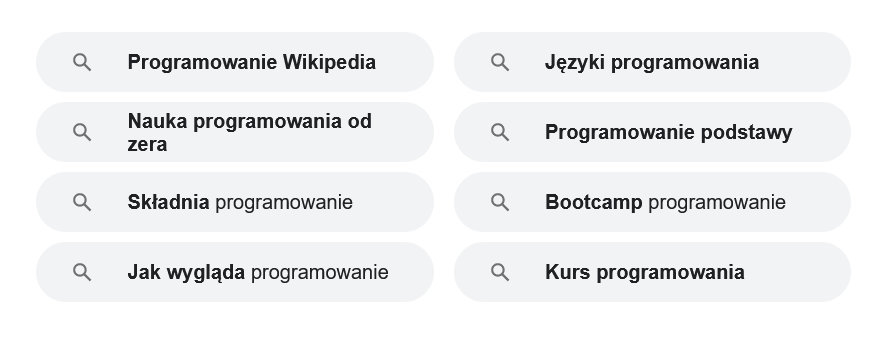
.
On the other hand, a slightly fancier query like “clear mind” will bring us a set of other concepts from the Buddhist primer:
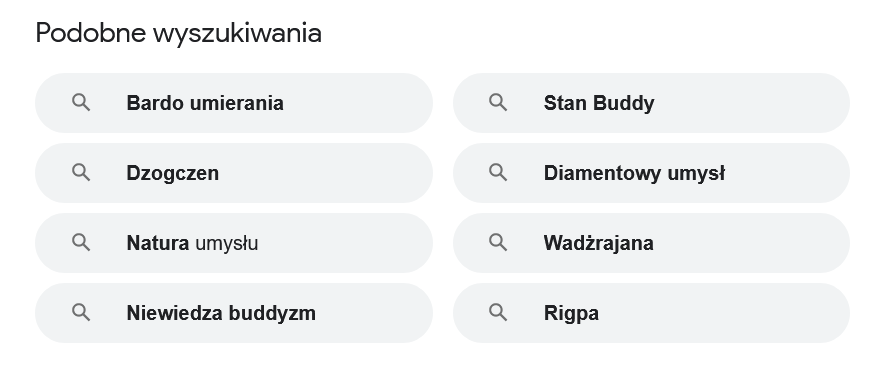
.
With this example, it is worth noting that Similar Searches will not in every case be semantically related words to the original query – but rather a more or less accurate suggestion by Google that these queries are somehow the same.
This can serve as an inspiration – after all, it’s based on real queries typed into the search engine – but especially for expert content – you need to make sure that the queries at the bottom of Google’s page actually have a semantic connection to the topic of interest.
Is clarity of mind really included in the topic of Buddha nature (or vice versa)? Is the Bardo also worth mentioning in this context?
That’s something you should already ask your master.
Another source of semantic keywords will be the snippet “Similar Questions” (People also ask). There you will find not so much keywords or terms related to the phrase, but specific questions that people type into the search engine in connection with it.
The same example as above – “programming”:
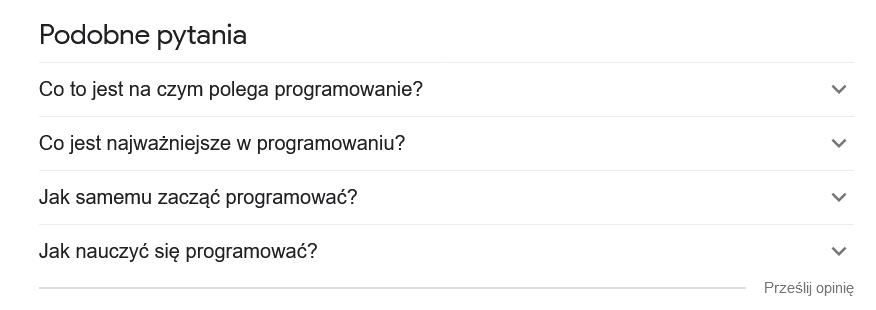
.
Or something for the palate – “focaccia”:
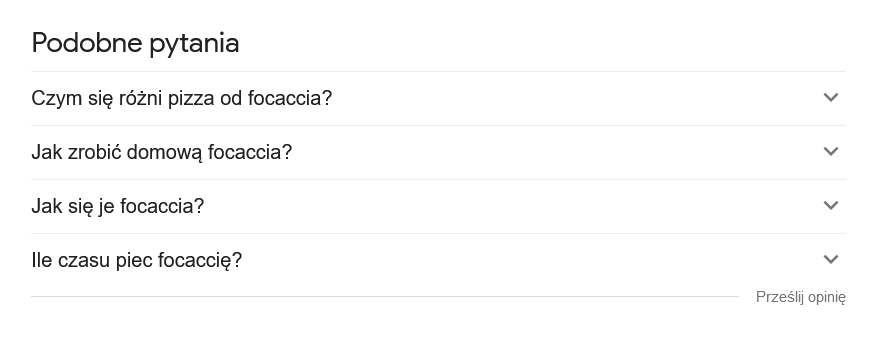
Keyword planner (Keyword planner)
.
Another method to check semantic keywords is a free tool from Google – Keyword planner, which is intended to optimize search advertising campaigns.
When you enter a phrase of interest into the Planner, the tool will show suggestions of related words. Often quite a few suggestions (though still less than professional SEO tools).
Plus, of course, statistics: the range of the average monthly number of searches for a given keyword, its competitiveness and so on.
Noteworthy, you can enter up to 10 phrases (not necessarily one-word phrases) into the search engine at the same time. This way you increase your chances of getting hints of semantically related words.
The keyword planner has the indisputable advantage of being free, and is based on data straight from Google – so it’s reliable (though at the same time not very precise, as it only shows ranges instead of specific numbers).
And again – the Planner’s hints need to be treated precisely as hints, not as rigid guidelines on which words are and which are not the semantically related ones. It is best to add your own expertise to this recognition.
.
Content Planner Senuto
.
To find semantically related keywords, you can use a dedicated tool like Content Planner. Its job is to help you find topic areas and keywords that will give your site high topical authority. That’s when the road to high positions in Google opens up.
In Content Planner, you specify a keyword and a domain (and preferably the domains of your competitors), and in response you get a set of semantically related topics. In each of these, in turn, there is a bag of keywords waiting to be unpacked.
.
.
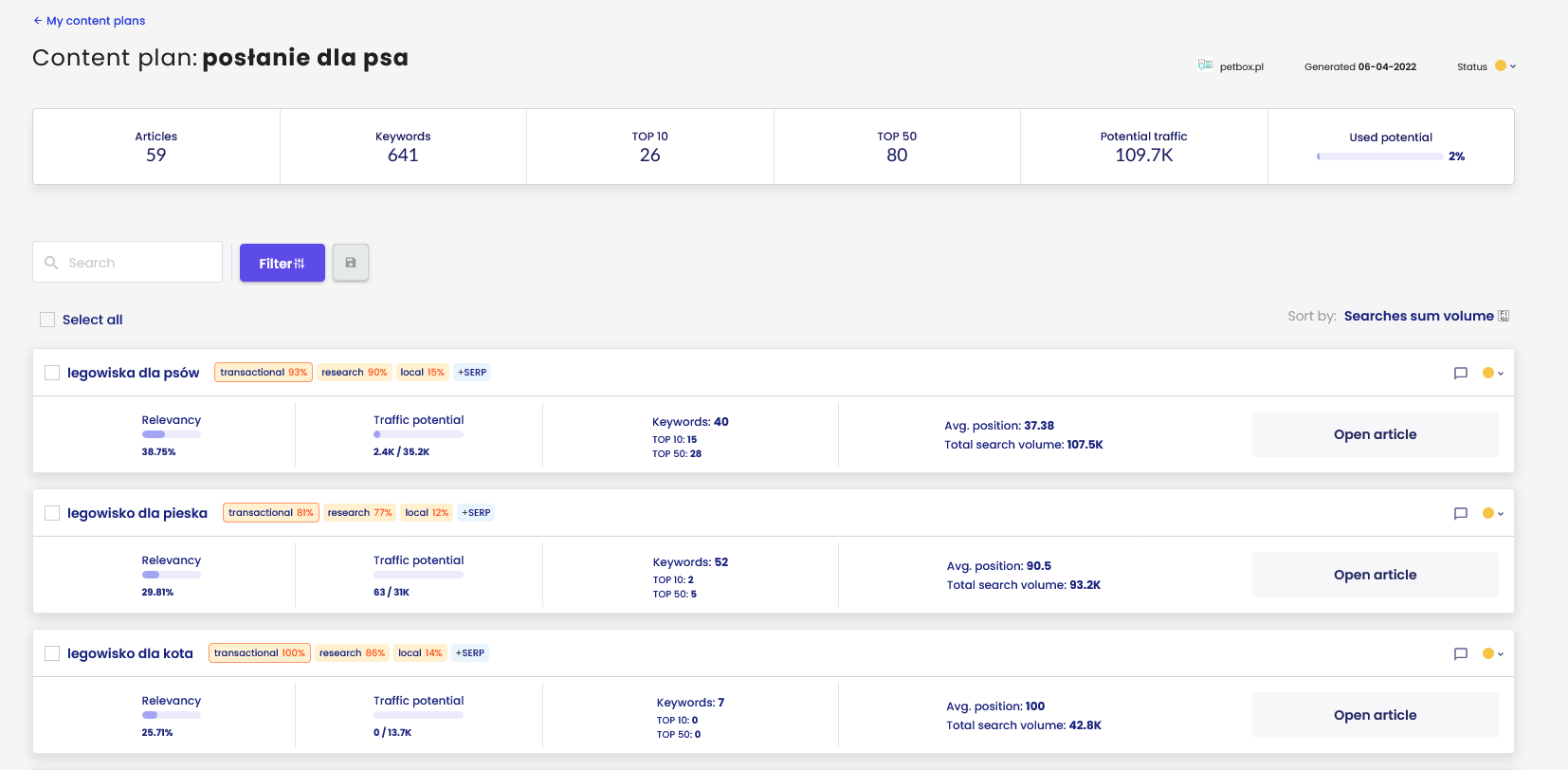
How to use semantic keywords
.
The answer to this question is relatively simple: semantic keywords are meant to be used for overall coverage of a given topic on your site. This means that you need to separate these topics and then publish relevant content within each topic.
So this is a simple answer, but the task itself is not among the easiest.
An SEO specialist can help you identify the right topics and semantic keywords. If, on the other hand, you want to do it yourself – which can be a very good idea if you are so inclined and want to save money on a specialist – use a dedicated tool.
Let’s take the keyword phrase “bed bug eradication” as an example. Content Planner generated 104 semantically related topics for it. Here are some of them:
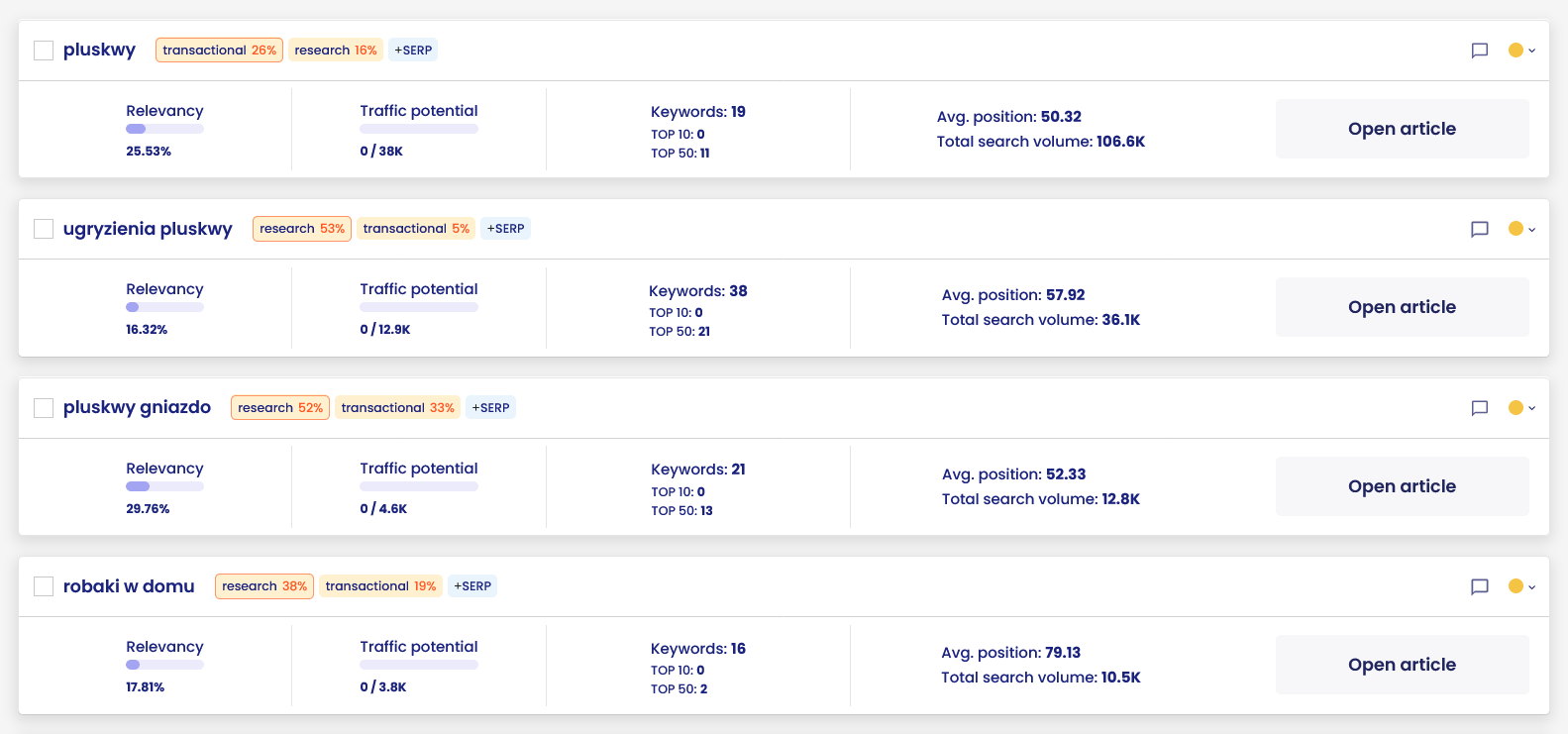
.
For each topic, we get a set of keywords. For example, the topic “bugs in the house” contains such phrases:
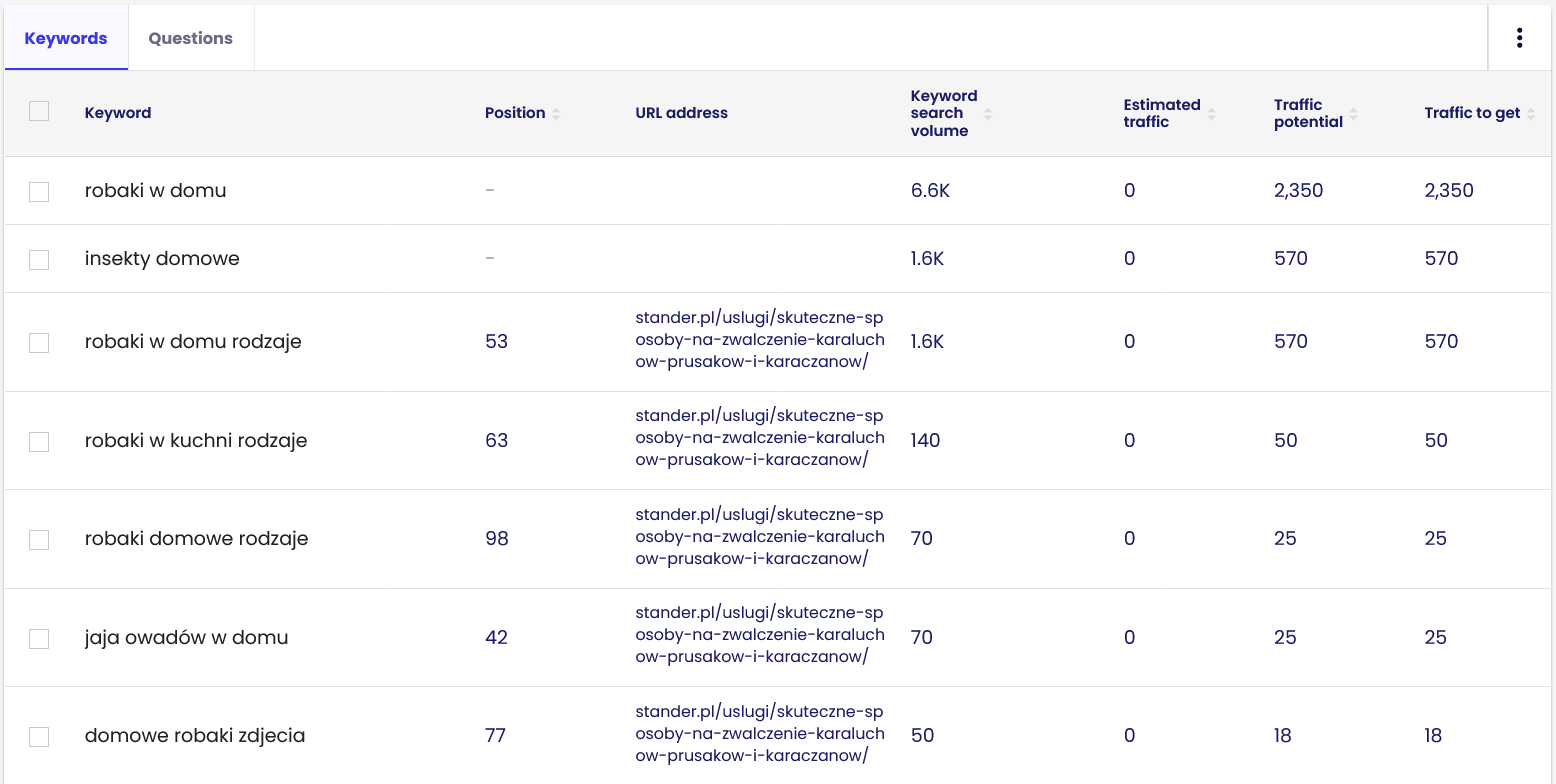
.
The work of describing all this will be quite a lot, as you can see – because the issue also turns out to be vast. If we want Google to consider the topic “bed bug eradication” as fully covered on our site, then we need to create a whole grid of dependent topics (articles).
This makes sense when we put ourselves in the shoes of the person affected by the bed bug problem. Questions abound and education plays an important role in this case. Often it is only after the need for information (research intent) is satisfied that we decide to contact the right company.
This is the idea behind semantic keywords: to exhaust the topic within one (or several) intentions and thus provide the user with the most complete experience possible. If you do this correctly, with attention to the other principles of semantic SEO, you will significantly increase your chances of ranking high on Google.
.
 Wojciech Maroszek
Wojciech Maroszek